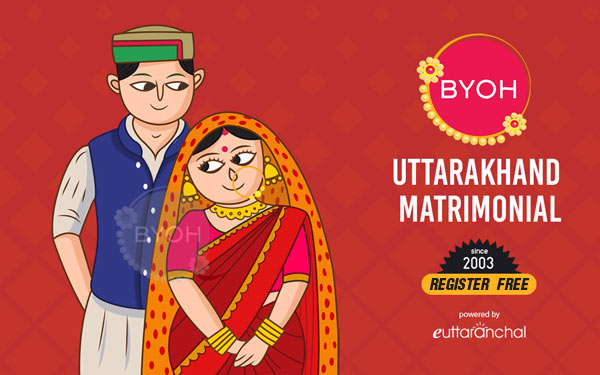Even to this day, a major percentage of upper caste people (Brahmins, Kshatriyas and Vaishyas) do not approve marriages of their daughters with grooms from lower caste. Brahmins and Rajputs will willingly take a girl from a lower caste, but marry their daughters only to a boy of a higher caste. There are prohibitions against marriages between the same clans or caste.
Learn about Marriage Rites, Customs of Garhwal and Kumaon Regions of Uttarakhand
With the present trend in the country, strict equality laws and the changing out-look of Hindu society, widow marriage are also being solemnized, where acceptable, with their relations and other members of their families. 'Polygamy' is not common now but Polyandry is still practiced in some areas of Chakrata Tehsil of Dehradun district.
Marriages among the tribes (Boksa, Tharu and Bhotiyas) are solemnized with certain variations in accordance with tribal customs.While talking about customs and traditions, usually, the marriages are pre-arranged. Having selected the girl, further negotiations are done on the basis of matching the horoscopes of the prospective bride and bridegroom. The horoscopes are studied by a 'Purohit' or an Astrologer from both the side. Status of the family and the caste are the main pre-requisites for negotiating any marriage offer.
A small ceremony is held when the proposal is accepted by changing Teeka (Vermillion) at the residence of the prospective bride. This is followed by an engagement ceremony on any auspicious day where a 'Necklace' is also presented to the girl. Marriage is fixed on another auspicious day. In addition, a feast is also given as in other parts of the country.Traditionally the marriage procession is led with a white flag called 'Nishan' which represents the bridegroom. This is followed by the local band consisting of a Shehnai, piper and a pair of drummers and a Nagara.
This in turn is followed by a white 'Palki' in which the bridegroom is carried. The last man of the marriage procession carries another, flag which is red and represents the bride. On arrival at the bride’s residence a reception is given in accordance with local customs and rites and a feast is given to the marriage party. Thereafter, 'Nath' (Nose ring) ceremony is performed at a pre selected auspicious time when the 'Nath' is presented to the bride.
Next day the betrothal ceremony takes place at a specially erected 'Bedi' which includes 'Havan' and the bride and the bridegroom complete seven rounds (Phera) of the sacred fire as per ritual conducted strictly according to the Shastras (Hindu scriptures) read by the Purohit. At the end, dowry or gifts if any, according to the status of the family, are given to the bridegroom. After a normal feast, the marriage party leaves the house of the bride. While returning, the marriage party is led with the red flag, followed by the red 'Doli' of the bride and the Palki of the bridegroom.
The white flag remains at the end. Various other rituals and 'Puja' are gone through till the bride finally steps into the house of the bridegroom. There is no 'Gauna' (Second marriage) system in Uttarakhand like in the plains but once again immediately after the marriage the bridegroom is required to come to the house of the bride and take her to his house on another auspicious day. Thereafter, the marriage is considered to have been finally solemnised.
